Additional notes (click to expand)
Medicinal
Culpeper: ‘Of Marshmallows ... ease pains, help bloody fluxes, the stone and gravel; being bruised and well boiled in milk, and the milk drunk, is a gallant remedy for the gripings of the belly, and the Bloody flux: if a feaver accompany the disease, boil a handful of common mallow leaves with a handful of these roots.’
Culpeper, Nicholas. (1650). A Physical Directory . London, Peter Cole.
A demulcent for coughs and 'nephritis'.
Stephenson, J. & Chrchill, JM (1836) Medical Botany . London, John Churchill
Traditional Herbal Medicine Registration (THMR).
Dioscorides recommended it as a treatment of bee and wasp stings, and said that applying the leaves crushed up in oil to the skin would prevent these insects from stinging.
Gunther, R.T. (1938). The Greek Herbal of Dioscorides ... Englished by John Goodyear.
Medicinal uses
Uses supported by clinical data None.
Uses described in pharmacopoeias and in traditional systemsof medicine
As a demulcent for symptomatic treatment of dry irritable coughs and irritations of oral and pharyngeal mucosa and as an emollient for wounds and dry skin (8, 18–23). Also used in cough mixtures to mask the bitter or pungent taste of other drugs (16).
Uses described in folk medicine, not supported by experimental or clinical dataTreatment of asthma, cystitis, dysentery and irritations of the gastric mucosa (7)
Contraindications No information available.
WHO monographs on medicinal plants commonly used in the Newly Independent States (NIS). 2010. WHO, Geneva
Nomenclature
Officinalis is an adjective for a medicinal substance. Male and female forms of the adjective are 'officinalis', the neuter form is 'officinale'. The adjective has to agree in gender with the noun it describes. Symphytum is presumably neuter as it has a neuter ending (-um), so it is officinale . Althaea and Asparagus are female and male (endings -a and -us) respectively so both are 'officinalis'.
Other use
It was used as a vegetable in the Middle East, but – more obviously – is an ingredient in the sweets called marshmallow, using a mucilaginous substance extracted from the roots mixed with sugar, egg whites, gum arabic and a flavouring such as vanilla.
Oakeley, Dr. H. F. . (2013). The Gardens of the Pharmacopoeia Londinensis.
link
Althaea officinalis L. Malvaceae. Marsh Mallow. Herbaceous perennial. Althaea comes from the Greek word for healing; officinalis indicates that it was used in the 'offices' - the clinics - of the monks in medieval times. Distribution: Africa. The mucilage from the roots was made into confectionary called marshmallow, but no longer. It is now made of sugars, corn syrup and gelatin with various flavourings. Dioscorides (Beck, 2003) recommends it for injuries, parotid tumours, scrofula, mastitis, uterine disorders, urinary porblems, painful hips, dysentery, shakes, ruptures, toothache, vitiligo, dysentery, haemoptysis, bites and burns.
Oakeley, Dr. Henry F. (2013). Wellcome Library notes.
link
In Physicke Mallowes have much reputation
The very name of Mallo seems to sound
The roote thereof will give a kind purgation
By them both men and women good have found
To womens monthly flowers they give laxation
They make me soluble that have been bound
And lest wee seeme in Mallowes prayses partiall
Long since hath Horace praised them, and Martiall
That worms that knaw the wombe and never stint
Are killed and purg'd and driven away with Mint.
Harrington (Translator), Sir John. (1608). The Englishman's Doctor or The School of Salerne. John Helme and John Busby Junior, Fleet Street.
Geographical distribution
- Africa, Northern Africa, Algeria
- Africa, Northern Africa, Tunisia
- Asia-Temperate
- Asia-Temperate, Caucasus
- Asia-Temperate, China, Xinjiang
- Asia-Temperate, Middle Asia
- Asia-Temperate, Siberia
- Asia-Temperate, Western Asia
- Asia-Tropical, Indian Subcontinent, Pakistan
- Europe
- Europe, Eastern Europe
- Europe, Middle Europe
- Europe, Northern Europe
- Europe, Northern Europe, Great Britain
- Europe, Southeastern Europe
- Europe, Southwestern Europe
Althaea officinalis L.
Family: MALVACEAEGenus: Althaea
Species: officinalis L.
Common names: Marsh Mallow
Pharmacopoeia Londinensis name: Althaea
Distribution summary: Europe, N. Africa, temperate Asia
Habit: Perennial
Hardiness: H5 - Hardy; cold winter
Habitat: Damp meadows, marshes, and by streams
Garden status: Currently grown
Garden location: Europe & Middle East (J), Pharmacopoeia Londinensis 1618 'Roots' (HSE 3)
Flowering months: July, August, September
Reason for growing: Medicinal, other use, traditional herbal registration
.JPG)
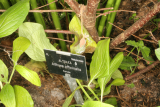
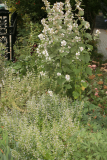
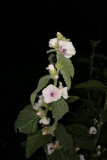
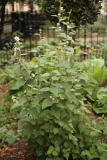

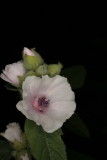

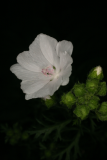
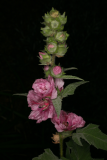
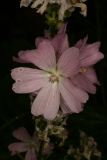
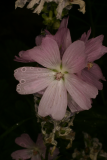
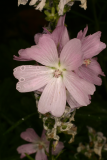
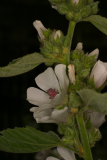
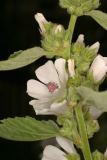
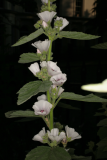
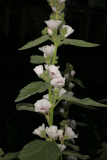
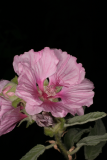
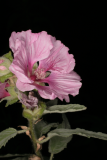

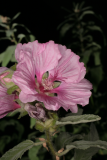
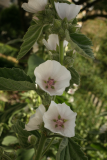
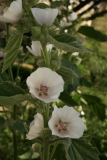
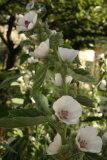
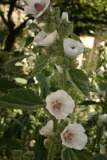
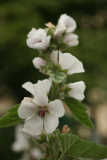

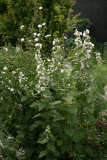
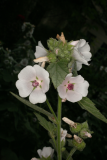
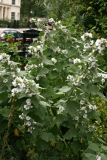
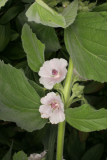


.JPG)
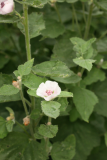
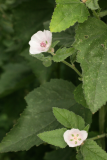



.JPG)
.JPG)
.JPG)